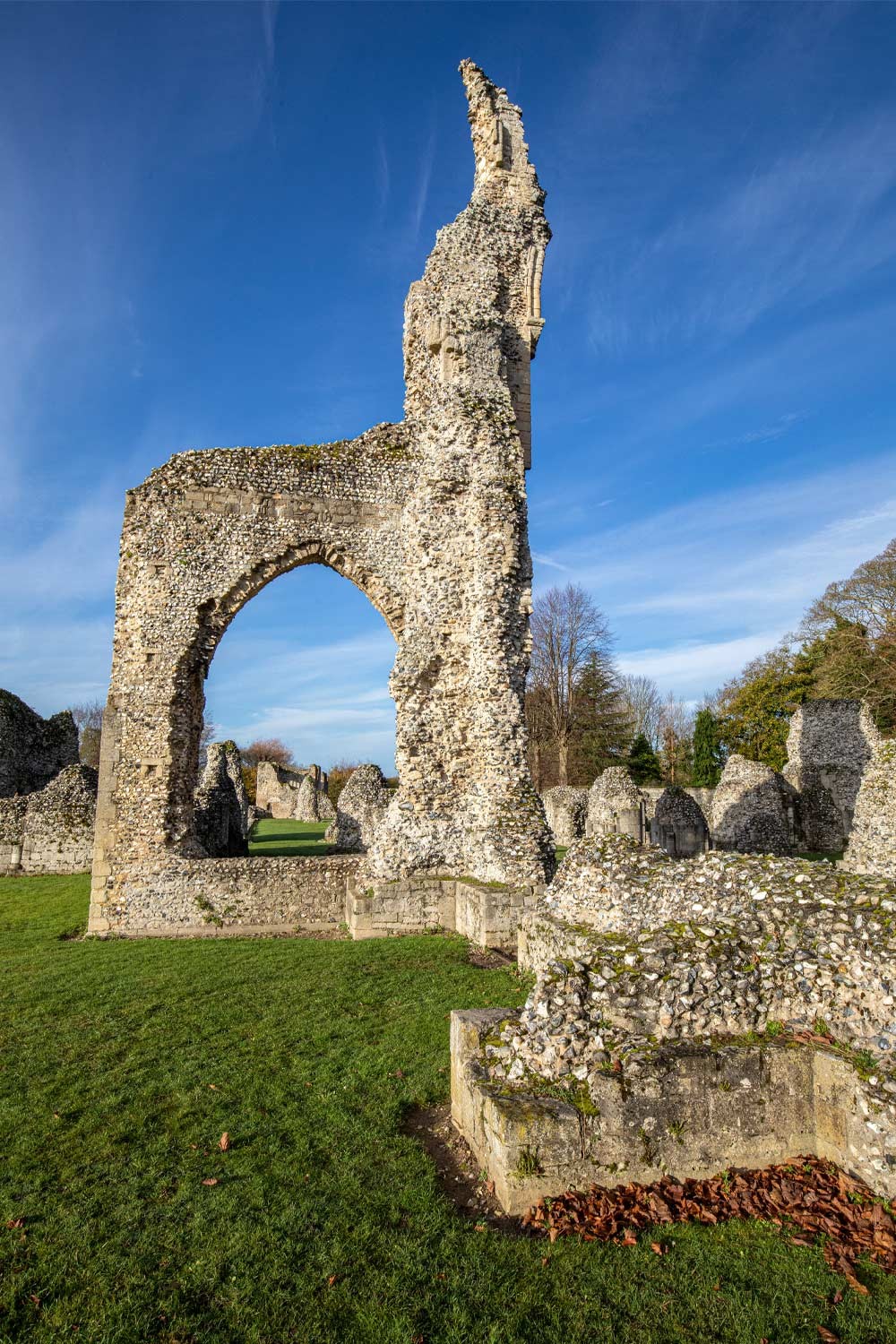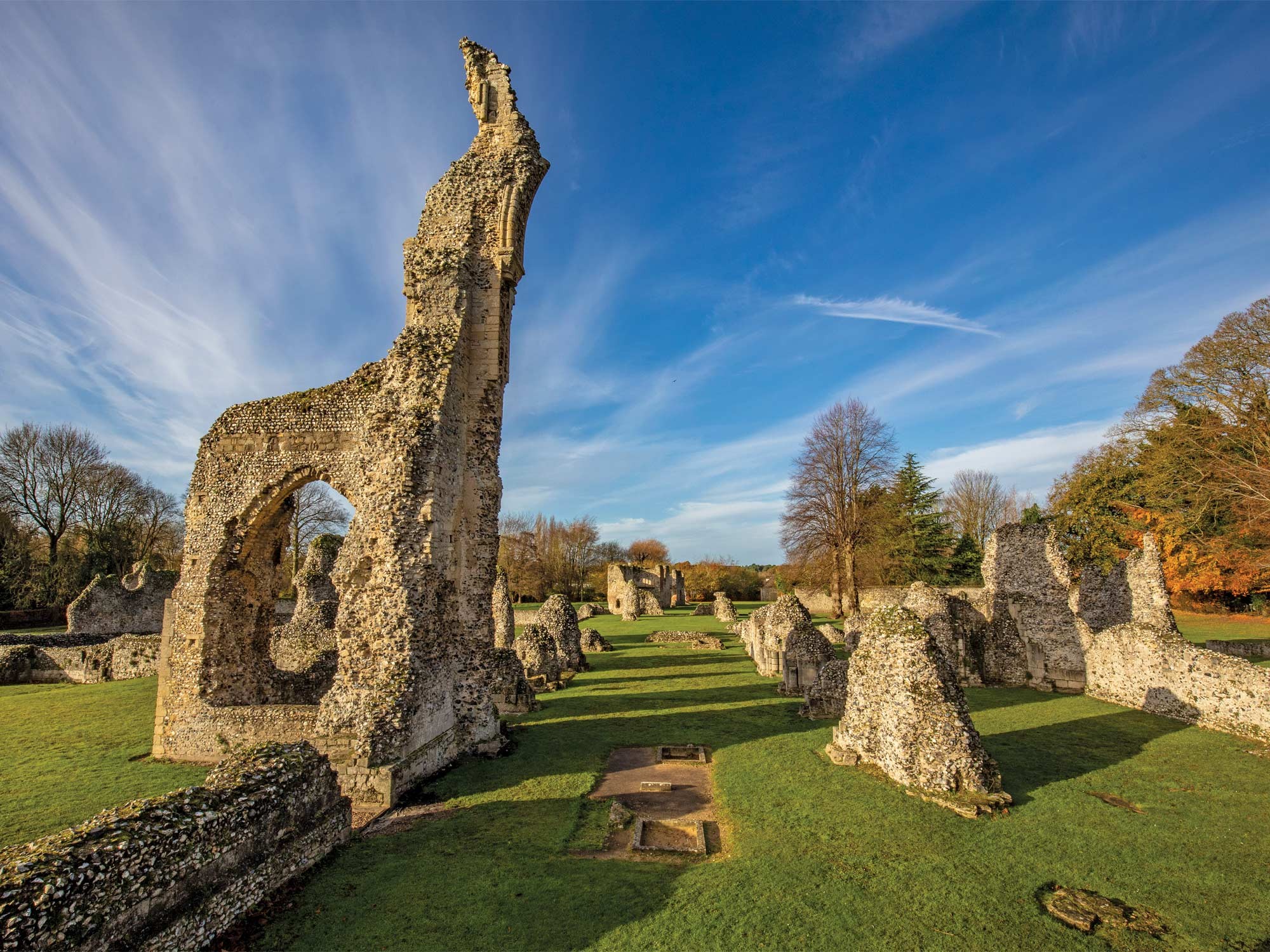
The last remains of a fascinating history
Today the atmospheric ruins of Thetford Priory are a popular visitor attraction, but few people realise that this was once one of the most important religious sites in the whole country
The story of Thetford Priory starts with a family of poor knights in Normandy, one of whose sons joined the Norman Conquest of England. Roger Bigod may have had humble beginnings, but by the time the Domesday Book was compiled a few years later in 1086, the spoils of war saw him listed as holding six lordships in Essex, 117 in Suffolk and no less than 187 in Norfolk.
Bigod based himself at Thetford, and on 1st September 1107 he laid the foundation stone for a new priory just outside the town’s walls. Affiliated with the great abbey at Cluny in France, it would be built on a truly magnificent scale in the rich architectural style typical of the religious order - although Roger Bigod wouldn’t live to see its completion. In fact, he died a week after laying the new priory’s foundation stone, resulting in an unseemly tug-of-war over his final resting place between the local monks and the Bishop of Norwich.
In the event, the latter had Roger’s body stolen in the middle of the night and buried in the recently-completed cathedral at Norwich.
As for Thetford Priory, it was finished 60 years after Bigod’s death, and would become one of the largest and richest religious foundations in medieval East Anglia.
Following a fairly typical monastic layout, the buildings were arranged around a central cloister which was enclosed on each side by covered walkways and gave access to all the main rooms used by the monks, including the church, the dining room, the dormitory and the formal meeting chamber of the community. It was surrounded by an infirmary (which had its own cloister), the prior’s lodgings, and various buildings such as barns and stables - all enclosed by a wall with a monumental gatehouse.
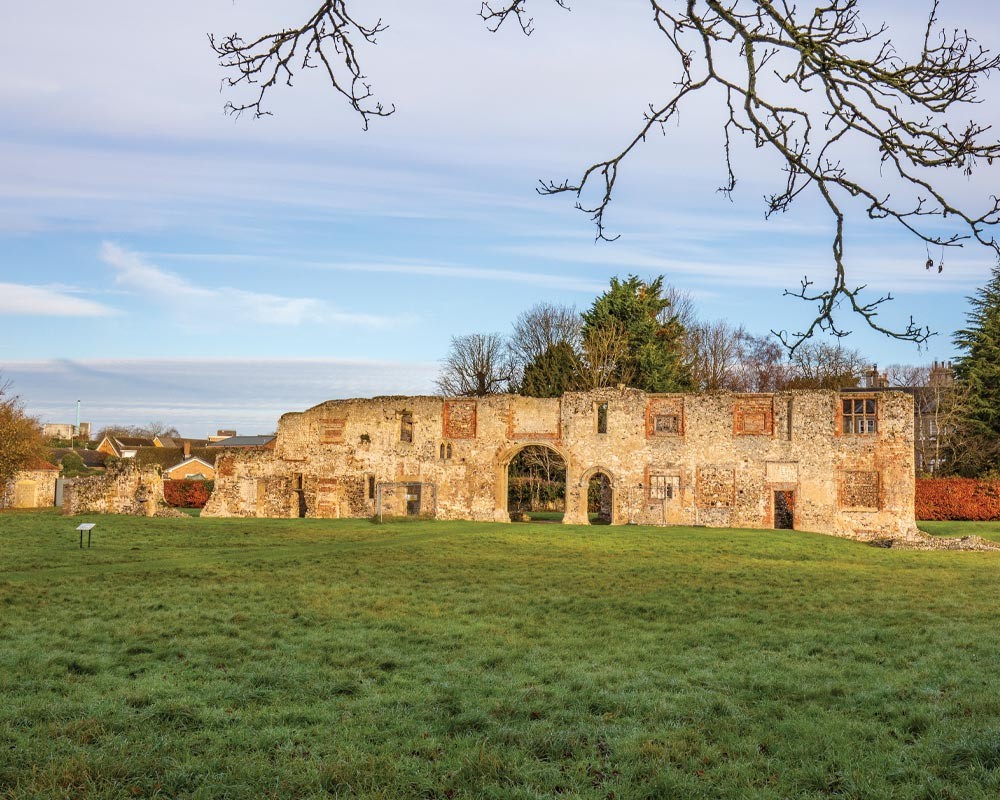
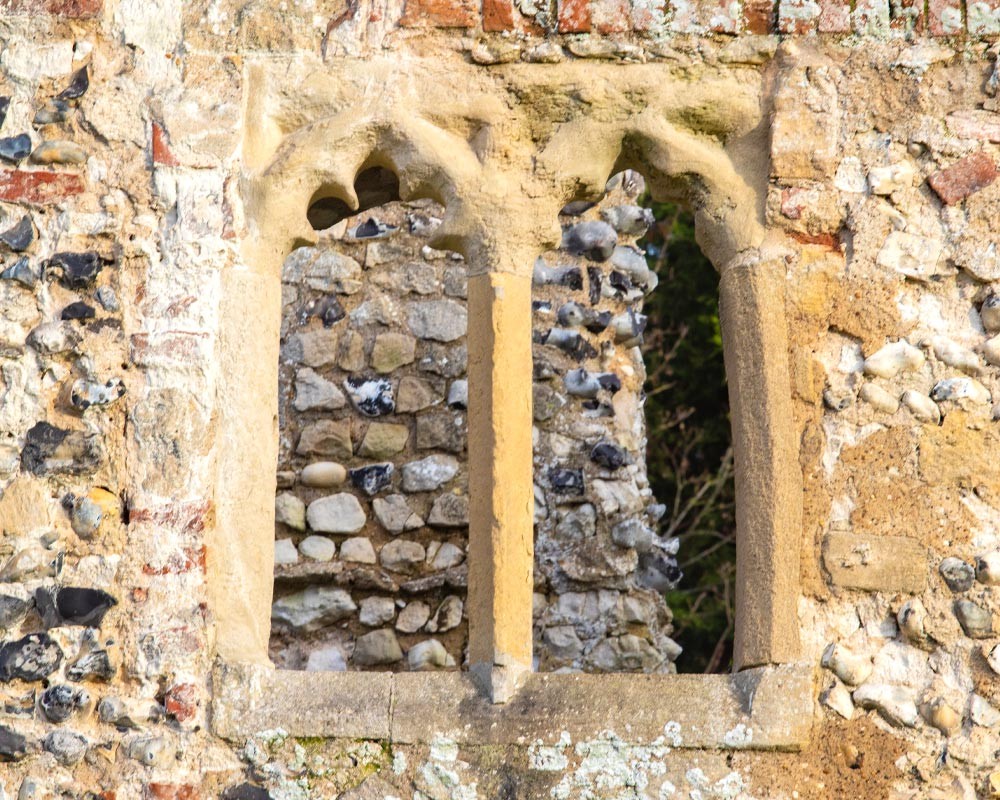
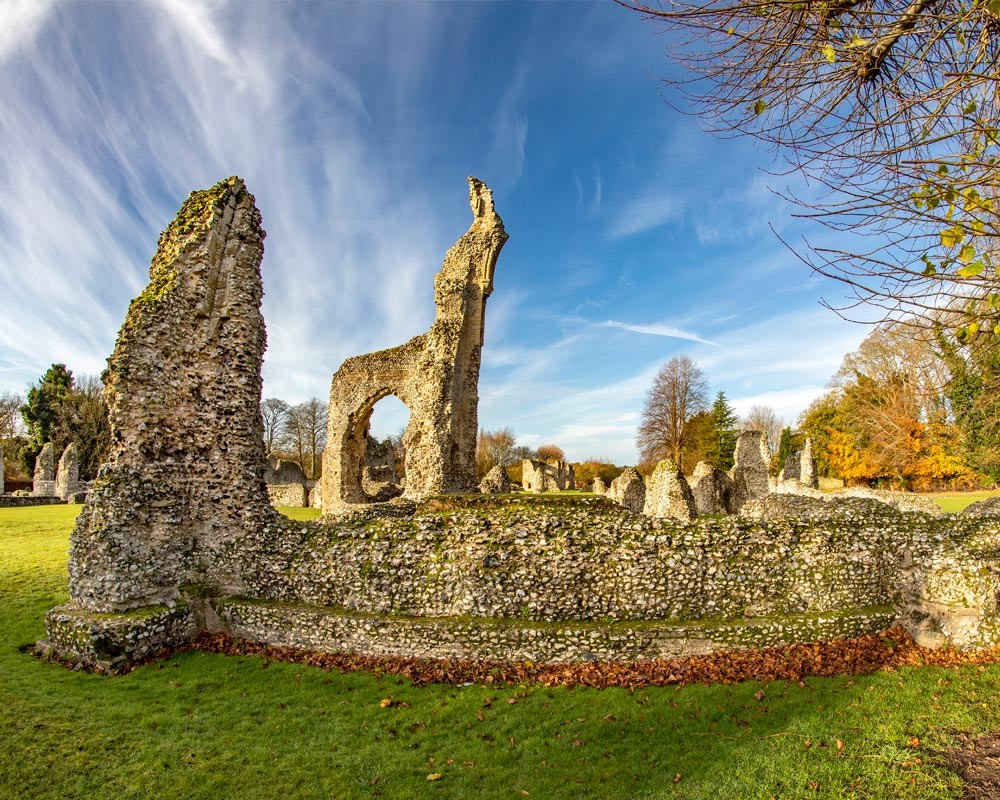
Much of the cost of these extensive building works was covered by the revenue generated from a lucrative cult built around a miracle-working statue of the Virgin, and the priory became a popular destination for pilgrims. It was home to numerous relics - including part of the robe of Jesus Christ (together with part of the manger in which he was born), parts of the clothing in which Lazarus was buried (at least temporarily), rock from the tombs of Jesus and Saint John, and various relics of at least ten other saints. According to the scant remaining records, the relics were said to have restored the speech of one person (at least) and brought two children back from the dead. It wasn’t all miracles and devotion at Thetford, however.
During the 1240s prior Stephen managed to turn the community into a house of debauchery, getting drunk and boisterous with a fellow monk called Bernard, an unnamed knight and a certain Guiscard, who was described as a “clericus monstruosus” - a description which doesn’t require a great knowledge of Latin to understand.
In 1248 the prior got into an argument with a rather temperamental monk called Stephen de Charun who had recently arrived from Cluny. Enraged by the prior’s abusive language and upset about being returned to France so swiftly, de Charun pulled out a knife and stabbed the prior to death at the door of the church.
There was even a riot at the priory in 1313 when an unruly mob forced their way into the grounds, assaulted the prior, killed a few monks inside the church and ran off with several valuable goods.
Following several periods of financial instability (despite its considerable income the priory seems to have run up equally substantial debts) Thetford Priory’s fate was sealed when it was threatened with dissolution. The powerful 3rd Duke of Norfolk (a staunch Catholic himself) wrote to Henry VIII proposing its conversion to a college, and pointed out that it would house the tombs of both himself and the king’s illegitimate son Henry Fitzroy - but it was all to no avail. The last prior and 16 monks at Thetford Priory finally surrendered to the king’s commissioners on 16th February 1540.
The once-magnificent priory was left to the elements and the growing town’s need for building material, and there was soon little left. Although the prior’s lodging would be used as a house for another 200 years, by the 1820s even that didn’t have a roof.
Today, the extensive remains comprise the lower walls of the church and cloister, the impressive shell of the prior’s lodging, and the almost-complete gatehouse. It may be a shadow of its former self, but Thetford Priory is still a hugely-impressive sight and a poignant reminder of one of the most tumultuous periods in our history.
You can find the remains of Thetford Priory at Water Lane in Thetford at IP24 1BB - there’s a small free car park on site. The site is generally open daily from 9am-4pm, and while most of the priory site is open, visitor access to the gatehouse is currently prohibited due to possible maintenance issues. Before planning your visit, please call 03703 331181 or see www.english-heritage.org.uk/visit/places/thetford-priory/ for the latest information and updates.
